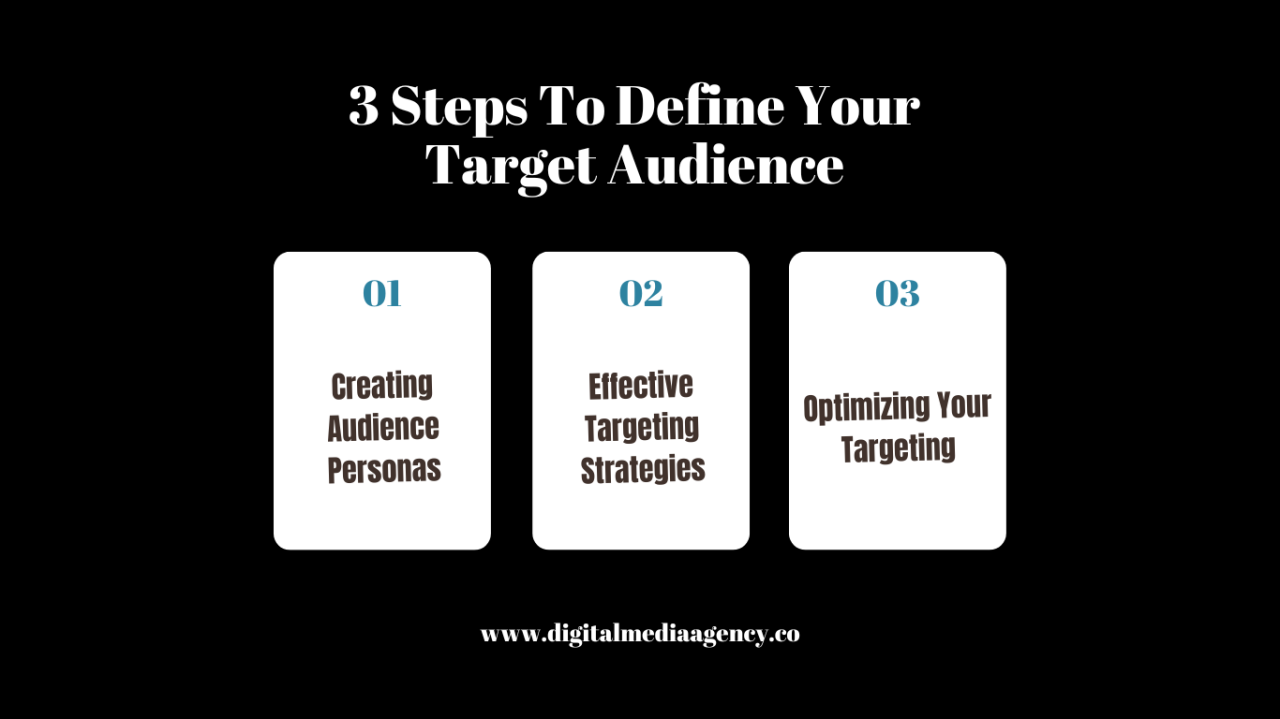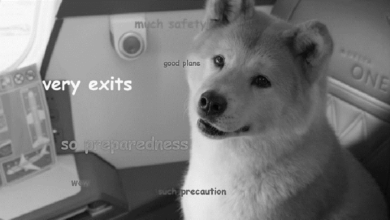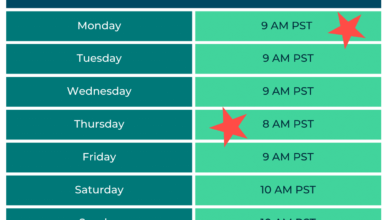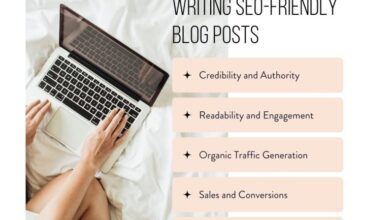
How to Market Your Business in 140 Characters
How to market your business in 140 characters? It sounds impossible, right? In today’s fast-paced digital world, grabbing attention in a tweet’s length is crucial. This post dives deep into the art of concise marketing, showing you how to craft compelling messages that pack a punch and drive results. We’ll explore strategies for targeting your audience, crafting killer calls to action, and leveraging different platforms to maximize your impact.
Get ready to learn how to make every character count!
From understanding the limitations of 140 characters to mastering the art of A/B testing, we’ll cover all the essential steps to create a successful micro-marketing campaign. We’ll explore different approaches, provide practical examples, and even show you how to use visual elements to amplify your message. This isn’t just about shrinking your marketing message; it’s about making it more effective.
Let’s get started!
Understanding the 140-Character Limit

Source: debikirk.com
Marketing in 140 characters, reminiscent of the old Twitter limit, presents a significant challenge. The brevity demands exceptional clarity and impact, forcing marketers to distill their message to its absolute essence. Every word must contribute to a compelling call to action or a memorable brand impression. Failing to achieve this can result in a missed opportunity, leaving the audience unengaged and the marketing effort ineffective.The difficulty lies in balancing brevity with comprehensibility.
Complex ideas and detailed product descriptions simply won’t fit. Marketers must master the art of concise communication, prioritizing impactful words and phrases over lengthy explanations. The challenge isn’t just about word count; it’s about crafting a message that resonates instantly and persuasively within that strict limit.
Examples of Successful Concise Marketing Messages
Several brands have successfully navigated the 140-character constraint. For instance, a classic example is Nike’s “Just Do It.” This short, powerful slogan encapsulates the brand’s ethos and inspires action. Similarly, “I’m Lovin’ It” for McDonald’s is another memorable example of effective concise marketing. These slogans aren’t merely catchy; they’re deeply ingrained in the public consciousness, demonstrating the power of brevity and memorability.
Another example could be a short, impactful announcement like “New iPhone 15! Pre-order now!” which creates urgency and directs customers to a specific action.
Strategies for Prioritizing Key Information
Prioritizing information within 140 characters requires a strategic approach. Start by identifying your core message – the single most important thing you want your audience to know. Then, eliminate all unnecessary words and phrases. Use strong verbs and concise nouns. Focus on the benefit to the customer, rather than lengthy feature lists.
Finally, include a clear call to action, directing the audience towards the desired response, whether it’s visiting a website, making a purchase, or following a social media account.
Comparison of Different Approaches
The table below illustrates different approaches to conveying a business message within 140 characters, highlighting the trade-offs between brevity, clarity, and call to action.
| Approach | Example | Strengths | Weaknesses |
|---|---|---|---|
| Benefit-driven | “Save 20% on your next order! Shop now.” | Clear benefit, strong call to action | Limited product detail |
| Problem/solution | “Tired of slow internet? Get faster speeds today!” | Addresses a pain point, offers a solution | May require prior brand awareness |
| Question/answer | “Need a plumber? Call us 24/7!” | Direct, action-oriented | Can feel less sophisticated |
| Brand-focused | “Quality craftsmanship. [Brand Name]” | Reinforces brand identity | May not drive immediate action |
Identifying Your Target Audience
Knowing your audience is paramount for effective marketing, especially within the constraints of a 140-character limit. A message that resonates with one group might completely miss the mark with another. Precise targeting ensures your message is seen by the right people, maximizing impact and minimizing wasted resources. Crafting compelling, concise messages requires a deep understanding of your ideal customer.Understanding your audience’s needs and preferences is crucial for creating effective 140-character marketing messages.
So you want to market your business in 140 characters? That’s tough, but think bigger! A killer video can do wonders, and learning how to leverage YouTube’s power is key. Check out this awesome guide on getting it on with youtube to boost your reach. Then, craft those concise 140-character posts to drive traffic to your amazing YouTube content!
This involves going beyond basic demographics and delving into their motivations, pain points, and aspirations. Effective methods include conducting thorough market research, analyzing existing customer data, and actively engaging with your audience through surveys, polls, and social media interactions. Observing competitor strategies and leveraging readily available data sources such as industry reports and social media analytics can also prove invaluable.
Methods for Identifying Customer Needs and Preferences
To effectively identify your ideal customer’s needs and preferences, a multi-pronged approach is recommended. This involves gathering data through surveys and questionnaires to directly solicit feedback from potential and existing customers. Analyzing website analytics provides valuable insights into user behavior, such as which pages are most popular and how long visitors spend on them. Social media listening allows you to monitor conversations about your brand and industry, identifying common themes and concerns.
Finally, competitor analysis allows you to benchmark against the best practices of others in your industry, while identifying gaps in the market that you can fill.
Examples of Targeted 140-Character Messages
The following examples demonstrate how to tailor your message for different customer segments. Remember, these are just examples; your specific message should be tailored to your brand voice and the specific needs of each segment.
- Segment: Budget-conscious consumers. Message: “Get amazing deals! Shop now & save up to 50%.”
- Segment: Tech-savvy early adopters. Message: “Experience the future! Pre-order our new gadget today!”
- Segment: Busy professionals. Message: “Save time & stress. Our service makes life easier.”
- Segment: Eco-conscious consumers. Message: “Sustainable style. Shop our ethically sourced collection.”
- Segment: Luxury buyers. Message: “Indulge in the finest. Experience unparalleled quality.”
Crafting Compelling Calls to Action
In the 140-character world of Twitter and short-form messaging, your call to action (CTA) is crucial. It’s the final push that converts a reader into a customer, follower, or engaged user. A poorly crafted CTA can leave your message ineffective, while a strong one can dramatically increase your results. The key is brevity and impact.Effective calls to action for 140-character messages require careful consideration of wording and urgency.
You need to convey your desired outcome clearly and concisely, encouraging immediate action. This often means prioritizing a single, powerful verb and a clear benefit for the user. Different approaches work better depending on your goal.
Call to Action Styles and Their Impact
The impact of your CTA is directly tied to its style. A command-style CTA, like “Shop Now!”, is direct and assertive, often effective for time-sensitive offers. A question-style CTA, such as “Ready to learn more?”, is more conversational and encourages engagement, suitable for educational content or lead generation. Finally, a benefit-driven CTA, like “Get 20% off!”, highlights the value proposition and motivates action based on reward.
The choice depends on your audience and your campaign objective. For example, a command style might be ideal for a flash sale, whereas a benefit-driven CTA might work better for a new product launch.
Examples of Strong, Concise CTAs
Here are a few examples illustrating effective, brief CTAs:
“Shop Now! Limited Stock!”
This combines a strong command with a sense of urgency.
“Learn More: [link]”
This is concise and directs users to further information.
“Get Your Free Guide!”
This offers a valuable incentive, driving engagement.
“Sign Up & Save!”
This clearly Artikels both the action and the benefit.
“Retweet to Win!”
This uses gamification to encourage interaction.
Utilizing Platforms Effectively

Source: digitalmediaagency.co
Harnessing the power of different social media and messaging platforms is crucial for maximizing the reach of your 140-character marketing messages. Each platform has its own unique audience and best practices, so a tailored approach is essential for success. Understanding these nuances will allow you to connect with your target audience more effectively and achieve a higher return on your marketing efforts.Effective platform selection depends on your target audience and marketing goals.
Some platforms are better suited for specific types of messages and engagement styles than others. Choosing the right platform allows for more focused and efficient communication.
Platform Comparison for 140-Character Messages
The following table compares several platforms suitable for concise marketing messages, highlighting their strengths and weaknesses. Consider your target demographic and campaign objectives when choosing a platform.
| Platform | Strengths | Weaknesses | Best Use Case |
|---|---|---|---|
| Wide reach, real-time engagement, trending topics | Character limit can be restrictive, high noise level | Quick announcements, promotions, engaging with current events | |
| SMS | High open rates, direct communication, immediate delivery | Limited character count, potential for spam filters | Targeted promotions, appointment reminders, urgent updates |
| Facebook (status updates) | Large user base, diverse demographics, visual content options | Algorithm can limit organic reach, requires engaging content | Sharing links, visual updates, community building (with longer supporting text) |
| Instagram (captions) | Highly visual platform, strong engagement potential, younger demographic | Character limit restricts detailed information | Visual promotions, behind-the-scenes glimpses, product showcases (with compelling visuals) |
Adapting Messaging for Different Platforms
The same 140-character message won’t resonate equally across all platforms. Consider the platform’s character limits, user expectations, and visual style when adapting your messaging. For instance, a Twitter message might focus on a concise announcement and a relevant hashtag, while an SMS message prioritizes a clear call to action. A Facebook post might include a link to a longer blog post.
Always maintain brand consistency, but tailor the delivery for the best results. For example, a Twitter message announcing a sale might be: “Flash Sale! 20% off all items! #FlashSale #Sale #Discount” while the SMS version might be: “Get 20% off everything! Shop now: [link]”.
Hashtag and Platform-Specific Feature Best Practices
Hashtags are crucial for increasing the visibility of your messages, especially on platforms like Twitter and Instagram. Research relevant and trending hashtags to expand your reach. Avoid using too many hashtags, as it can appear spammy. For SMS, utilize s and clear calls to action. On platforms like Facebook and Instagram, leverage visual elements like images and videos to enhance engagement.
Always consider using platform-specific features such as polls, stories, or live streams to enhance interaction with your audience. Remember to analyze the performance of your messages to refine your strategy over time.
Measuring and Improving Results

Source: diggrowth.com
Optimizing your 140-character marketing campaigns requires a robust system for measuring their effectiveness. Without data, you’re essentially throwing darts in the dark. Understanding which metrics matter most allows you to refine your approach and maximize your return on investment (ROI). This involves tracking key performance indicators (KPIs) specifically tailored to concise messaging.Successful 140-character marketing hinges on understanding how your audience interacts with your messages.
Simple metrics alone aren’t enough; you need a comprehensive strategy for analyzing trends and identifying areas for improvement. This involves combining quantitative data with qualitative insights to build a holistic view of your campaign’s performance.
Key Performance Indicators (KPIs) for Concise Messaging, How to market your business in 140 characters
Several KPIs are particularly relevant for evaluating the success of short-form marketing campaigns. These metrics provide insights into audience engagement, message resonance, and overall campaign effectiveness. Focusing on these key indicators helps you refine your approach and achieve better results.
- Click-Through Rate (CTR): This measures the percentage of users who click on your link after seeing your message. A high CTR indicates a compelling message and effective targeting. For example, a CTR of 5% on a Twitter campaign suggests that your message is resonating with a significant portion of your audience.
- Engagement Rate: This encompasses likes, retweets, replies, shares, and other interactions with your message. A high engagement rate suggests that your message is not only seen but also considered valuable and worth sharing by your audience. A campaign with a high engagement rate, say 10% on Instagram, signifies a highly effective post.
- Conversion Rate: This measures the percentage of users who complete a desired action, such as making a purchase or signing up for a newsletter, after seeing your message. A high conversion rate directly correlates to the success of your marketing efforts in driving desired outcomes. For example, a 2% conversion rate from a Facebook ad to website purchases shows a strong return on ad spend.
- Reach: This indicates the total number of unique users who saw your message. A wider reach suggests your message is effectively penetrating your target audience. A Twitter campaign reaching 10,000 unique users suggests broad exposure.
Methods for Tracking and Analyzing Campaign Performance
Effective tracking and analysis are crucial for understanding what’s working and what’s not. Utilizing the built-in analytics features of the platforms you’re using is essential. Supplementing this with external tools can provide a more comprehensive picture.The built-in analytics dashboards of platforms like Twitter, Instagram, and Facebook provide valuable data on metrics such as reach, engagement, and conversions. These dashboards allow you to track your campaign’s performance in real-time and make data-driven adjustments as needed.
For a more detailed analysis, consider using social media management tools that offer advanced reporting and analytics capabilities. These tools can provide insights into audience demographics, sentiment analysis, and other valuable metrics. For example, comparing the performance of different ad variations using A/B testing through a platform’s analytics can reveal which messaging resonates most effectively.
Visual Elements in Concise Marketing
In the world of 140-character marketing, a picture truly is worth a thousand words. Visuals are crucial for grabbing attention and conveying your message quickly and effectively, especially when text is severely limited. A well-chosen image can instantly communicate your brand’s personality, product benefits, or a compelling call to action, all within the confines of a tweet or short social media post.
The right visual can significantly increase engagement and memorability.Visual elements dramatically enhance message impact within the 140-character limit by bypassing the need for lengthy explanations. A single, powerful image can often convey more information and emotion than a paragraph of text. This is especially important on platforms where visual content is prioritized in the user feed, increasing the chances of your message being seen and understood.
The key is selecting visuals that directly support and strengthen the accompanying text, creating a synergistic effect.
Image Descriptions for Concise Marketing
Effective image descriptions should be concise and evocative, mirroring the brevity of the accompanying text. They need to reinforce the message, not repeat it. Here are some examples:A vibrant image of a person smiling while using your product could accompany the tweet: “Boost your productivity! #productivity #[yourproduct]” The description would be: “Happy customer effortlessly achieving more with [your product].”A before-and-after photo showcasing the transformative power of your service could be used with: “See the difference! #transformation #[yourservice]”.
The description would be: “Dramatic results achieved with our [yourservice]. Before & After.”An infographic summarizing key statistics could support: “Key stats you need to know! #data #[yourindustry]”. The description would be: “Visual summary of key industry data highlighting [key takeaway].”A close-up shot of a product detail could accompany: “Experience the difference! #quality #[yourproduct]”. The description would be: “High-resolution detail showcasing the superior craftsmanship of [your product].”
A/B Testing and Optimization: How To Market Your Business In 140 Characters
A/B testing is crucial for maximizing the impact of your 140-character marketing messages. By systematically testing different variations, you can identify which resonates most effectively with your target audience, leading to higher engagement and conversions. This iterative process allows for continuous improvement and refinement of your marketing strategy.A/B testing involves creating two or more versions (A, B, C, etc.) of your message, each with a single element changed.
You then distribute these versions to different segments of your audience and track their performance metrics, such as click-through rates (CTR) and conversions. The version that performs best becomes your new benchmark, and the process repeats.
A/B Testing Process for 140-Character Messages
The process begins with identifying a specific element of your message to test. This could be the call to action (CTA), the wording, or even the use of emojis. Next, create variations of your message, changing only the selected element. For example, you might test different CTAs (“Shop Now” vs. “Learn More”), or slightly altered wording to see which version elicits a stronger response.
After distributing these variations to your audience, carefully monitor the results. The platform you use will usually provide analytics to compare the performance of each variation.
Analyzing A/B Test Results
Analyzing the results involves comparing key metrics like CTR, conversion rates, and engagement (likes, retweets, etc.) across different versions. Statistical significance is key; you need enough data to confidently determine if the differences in performance are truly due to the variations tested or simply random chance. Many platforms offer tools to help determine statistical significance. Based on the analysis, you can then select the best-performing version and continue refining your messaging strategy.
Examples of A/B Testing Variations
Let’s say your initial message is: “New Sale! Get 20% off! Shop Now.”Here are some A/B test variations:* Variation 1 (CTA): “New Sale! Get 20% off! Learn More.” This tests whether a softer CTA performs better.
Variation 2 (Wording)
“Huge Savings! 20% Off! Shop Now!” This tests the impact of stronger wording.
Variation 3 (Urgency)
“Sale Ends Soon! 20% Off! Shop Now!” This adds a sense of urgency.
Variation 4 (Emojis)
“New Sale! 🎉 Get 20% off! Shop Now!” This explores the impact of visual elements.By comparing the performance of these variations, you can identify which elements are most effective in driving engagement and conversions. For instance, if Variation 2 (“Huge Savings!”) significantly outperforms the original, you might conclude that stronger wording is more effective for your audience. If Variation 3 (“Sale Ends Soon!”) shows the highest conversion rate, you might prioritize creating a sense of urgency in future campaigns.
Closing Summary
Mastering the art of 140-character marketing is about more than just brevity; it’s about impact. By understanding your audience, crafting compelling calls to action, and utilizing the right platforms, you can create concise, engaging messages that resonate and drive results. Remember to track your performance, analyze your results, and continuously optimize your approach. With a little creativity and strategic planning, you can transform those 140 characters into a powerful marketing engine for your business.
So, go forth and conquer the character limit!
Popular Questions
What if my business isn’t easily summarized in 140 characters?
Focus on one key benefit or a compelling offer. Prioritize what’s most important to your target audience.
How do I choose the right platform for my 140-character message?
Consider your target audience’s preferred platform. Twitter is ideal for quick updates, while SMS is great for direct, personalized messages.
What are some examples of strong CTAs for 140-character messages?
Examples include “Learn More,” “Shop Now,” “Get Your Free Quote,” or “Sign Up Today.”
How often should I post 140-character marketing messages?
Experiment to find the optimal frequency. Too much can be overwhelming, too little might not be enough to maintain visibility.




